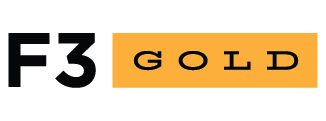Why mineral exploration poses no risk to rapid creek
F3 Gold’s Rob Bergmann spoke with South Dakota Public Broadcasting’s Seth Tupper about the safety of exploratory drilling in the Black Hills

Rob Bergmann
President, F3 Gold
A group called American Rivers is claiming that mineral exploration in the Black Hills is endangering Rapid Creek; the group has named the creek one of the top 10 endangered rivers according to a recent press release. Reporter Seth Tupper with South Dakota Public Broadcasting reached out to F3 Gold for comment, and Rob Bergmann talked to Seth about F3’s project and why properly conducted exploratory drilling isn’t a risk to the watershed. You can listen to Seth’s story here.
When it comes to our exploration efforts, the issue of water safety is of paramount concern to F3 Gold, just as it is to the residents in the Black Hills. Since our first large meeting with public stakeholders in Silver City more than a year ago, we have addressed residents’ concerns about water and explained how our plan of operations, the location of our proposed project and our experience and track record of safety makes us one of the most qualified operators in the Hills.

Our project is small scale, with a total footprint of less than 4 acres. In fact, the USFS has a Categorical Exclusion for small, low-impact projects like ours. Despite this, we have been supportive of going through the Environmental Analysis (EA) process because we want to do the due diligence to illustrate our project is safe.
American Rivers is asking the USFS to conduct a full EIS on all mineral exploration projects in the Black Hills. Yet exploratory drilling is a proven and safe process that is very similar to drilling a residential water well – something that occurs all over the Black Hills without an EIS, or even an EA, because the practice is accepted as safe. The exploratory drilling process uses a diamond core drill bit, steel pipe, clean potable water and biodegradable lubricants to drill a 3″ diameter hole (about the size of a baseball) to remove a rock core for analysis. When drilling is complete, the hole is sealed at the surface and the site is reclaimed. For a detailed explanation of our exploratory drilling process please see this post and infographic.
In the SDPB news story, Lilias Jarding from Black Hills Clean Water Action says that “exploration’s only done for one purpose, and that’s to find something that can be mined.”
In reality, less than 0.1% of prospected sites will lead to a producing mine. When such discoveries are made, the process of permitting a mine takes many years, and includes significant public input, detailed environmental studies and a full EIS before any mining could be considered.
The process of discovery – even when it doesn’t lead to mining – has significant value in advancing geological science and understanding, including hydrological data.
In the world of exploration geology, a discovery has value of its own regardless of the potential of mining. A discovery would have significant meaning for us at F3 Gold, as it would help us prove and refine our geological theory and continue to learn more about the unique and complex geology of the Black Hills. We’ve learned much of what we can at the surface, but we need to study the rock core at depth to test our thesis.
The bottom line is that we have proposed an exploration drilling project, not a mining project, and we are confident that the EA process the USFS is currently conducting will provide the necessary review, above and beyond the normal requirements of a Categorical Exclusion, to determine what, if any, environmental risks exist. We look forward to the results of the EA and taking this project to the next phase.
CONTACT US




